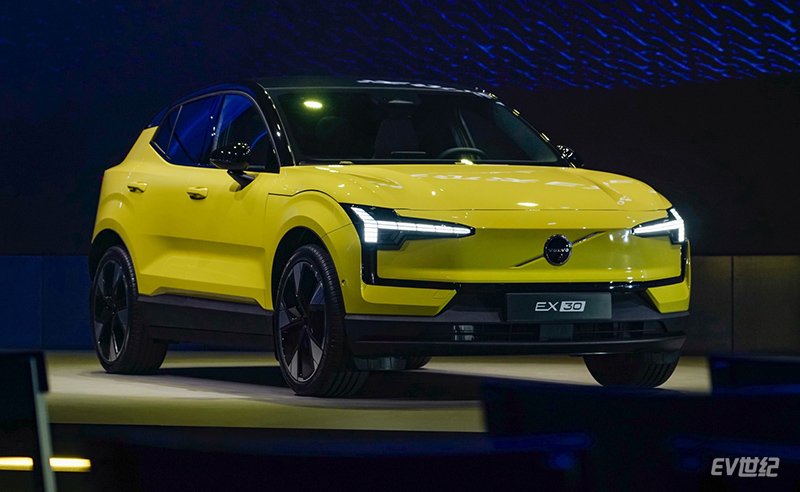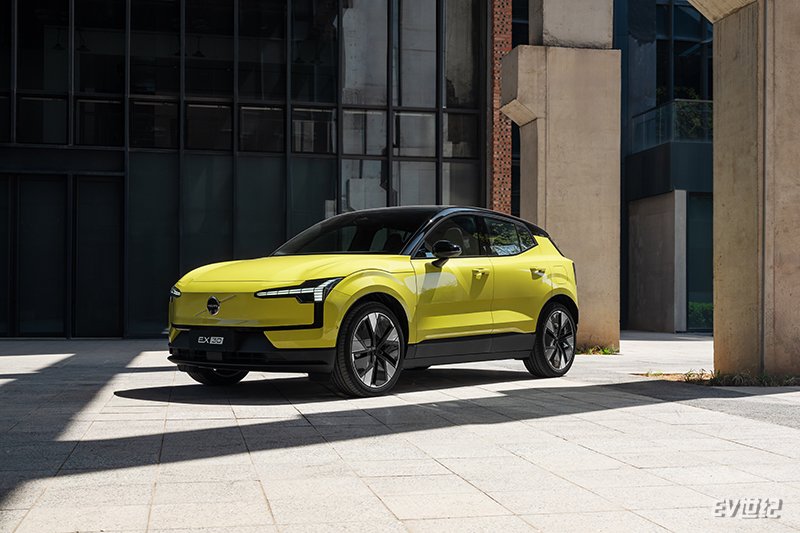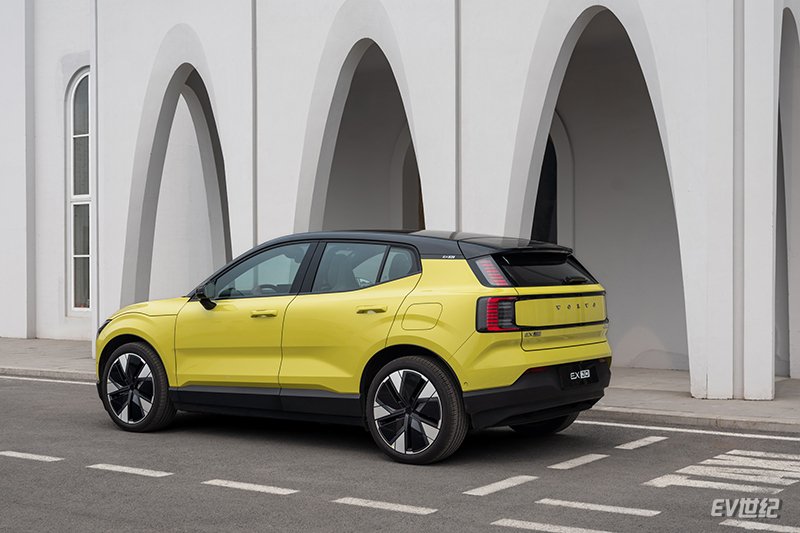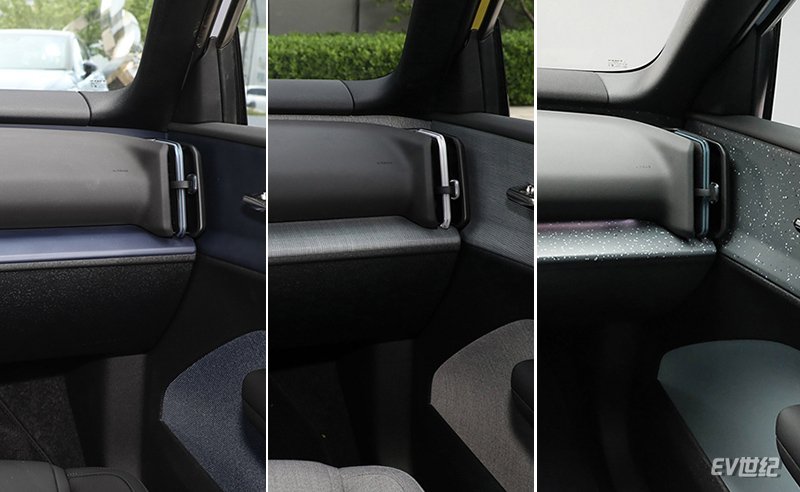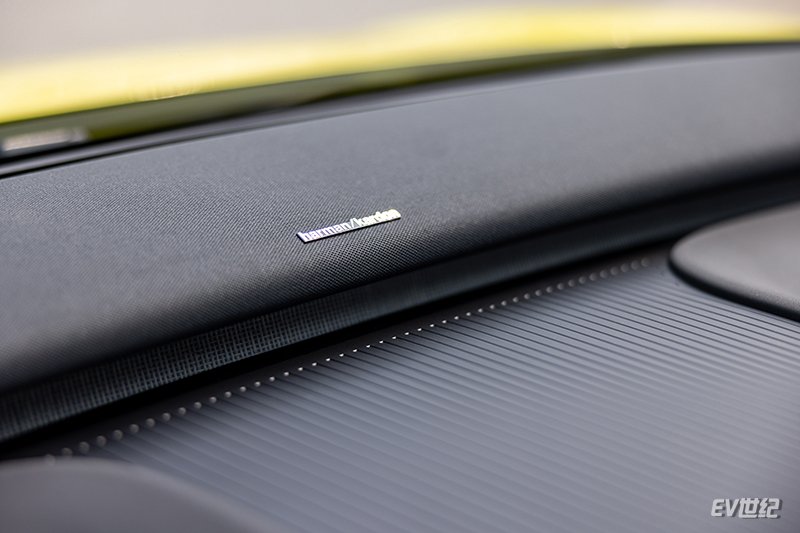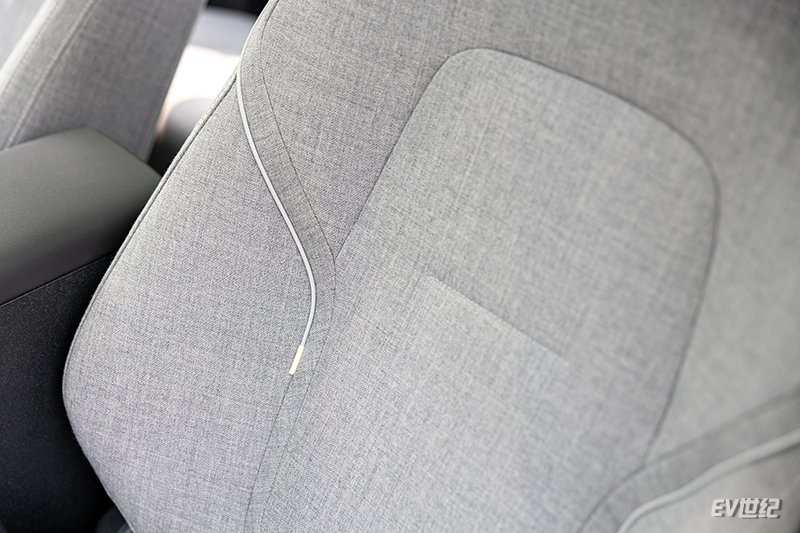Volvo, in the author’s mind and in the minds of most users, may be very suitable with the typical image of stubbornness of Nordic people. It is reminiscent of the Swede in the movie “A Man Called Ove” who couldn’t stand the random entry and exit of vehicles outside the community, pets urinating everywhere, and garbage being thrown around randomly. In the opening of the domestic new energy vehicle market, electric cars costing over 100,000 yuan (13960$) are starting to compete on who has more and bigger screens, whose voice assistant can understand Shandong dialect, and whose intelligent driving can make people feel safe enough to let their guard down. Volvo decided: not playing with you anymore.
So, we saw the all-new EX30 launched today.
The all-new Volvo EX30, priced at 20.08-25.58 million yuan, is a compact pure electric SUV over 4.2 meters long. It lacks exaggerated styling, flashy exterior screens, refrigerators, sofas, and karaoke machines. However, after seeing and touching it, you still have to admit that it is a very exciting and fun pure electric car.
The Volvo EX30 stands out for its unconventional design, both inside and out. It follows the minimalist aesthetic principle of “Less is better,” aiming to bring the vehicle back to basics. According to Volvo’s official training instructor: “Our lives are already very complex, with an overwhelming amount of external information and various trivial matters to deal with. Therefore, a simple electric car can help you relax on your way home, allowing your mind to return to itself.”
Speaking of which, although the new EX30 design does not have too eye-catching elements, Volvo’s control of beauty and details is still worth believing. The overall proportion of the body is maintained very well, and the design of the four wheels makes it look dynamic and stable. The combination of powerful front wheel arches and the hood is one of the visual highlights, as well as the familiar yet unfamiliar pixelated “Thor’s Hammer” and “Viking Axe” headlamps front and rear, making the new EX30 look youthful and technological.
The interior of the all-new EX30 follows a minimalist design style. First glance reveals no physical buttons, with the multifunction keys on the steering wheel being touch-sensitive. There are no traditional gauges, with vehicle information displayed on the central touchscreen, similar to the Model 3. The interior materials are simple, without extravagant leather or wood, giving it a Nordic home vibe.
But behind the simplicity, Volvo’s efforts on the all-new EX30 can give you endless topics to talk about throughout a whole dinner party. The 12.3-inch central control screen adopts a new car-machine interaction system, equipped with a Qualcomm 8155 chip, breaking our inherent impression of Volvo. Navigation, online entertainment, voice assistant, and rich APP extensions are all comprehensive, on par with domestic brands’ car machines.
The interior of the car doors with a slim design even hides the sound system. The new EX30 features a Harman Kardon surround sound system. The various materials in the car look ordinary but are actually quite exquisite. The blue decorative panels incorporate denim elements from high-end clothing and luxury bags. The gray and white woven panels are made from environmentally friendly natural linen. The starry panels make each EX30 unique.
In addition, the car is equipped with the pixel weaving technology, inspired by the craftsmanship of luxury fashion brands. The innovative environmentally friendly wool-blend technology is applied to all seats, providing a comfortable driving experience. “Sustainable” and “environmentally friendly” are Volvo’s direct expressions of social responsibility as a leading international car company.
The subtraction inside and outside the car turns into “addition” in driving pleasure, which is a stubborn point of Volvo. The new EX30 offers two power options: rear-wheel drive single motor and four-wheel drive dual motor. The rear-wheel drive 200kW electric drive system uses the popular SiC silicon carbide technology, capable of handling larger power output. The four-wheel drive version adds a 115kW electric drive to the front axle, achieving 0-100km/h in as fast as 3.6 seconds, rare in its class. The 66kWh battery pack can provide a CLTC range of 590km, thanks to IPS battery pack technology and a 622 ternary NCA ratio, this battery capacity is larger than other electric vehicles of the same size. For normal city commuting, charging once a week is not a problem.
In addition to excellent power and reliable range, the new EX30’s driving pleasure also lies in its excellent chassis quality, sensitive and resilient suspension, agile steering, and impressive test results such as 81km/h moose test, 38m shortest braking distance, and 5.4m turning radius, making it a great choice for urban driving. Safety, as Volvo’s most prominent label, is something we don’t need to worry about. The new EX30 adopts the World Tree Intelligent Safety System, including a high-strength body structure design, advanced airbag protection system, powerful driver assistance systems composed of current perception and technology, unique “wheel loss survival” technology, and WHIPS front head and neck protection system.
Summary: “Small but powerful” is the slogan Volvo created for the all-new EX30, and it has lived up to it before entering the Chinese market. According to official Volvo data, the all-new EX30 has received over 60,000 orders in the European market and in April became the second best-selling pure electric vehicle after the Model 3. The user profile prepared by Volvo for the all-new EX30 includes fashion-conscious urban youth in their twenties, quality couples in their thirties, young couples with small children, and some knowledgeable elderly people buying cars for their children. These groups may share a common characteristic – they are not short of money. Has Volvo become a brand that doesn’t rip off poor people? Not really. From another perspective, these groups may have fundamentally different needs in terms of quality, aesthetics, social identity, and vehicle attributes compared to consumers with similar budgets but strong demands in size, configuration, traditional luxury, etc. In short, those who want to buy the all-new Volvo EX30 are fundamentally different from those who don’t appreciate it.
